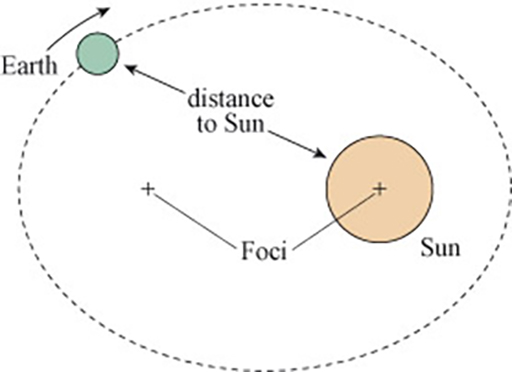3.6 The Milankovitch model
The amount of energy that the Earth receives from the Sun depends on its distance from the Sun. You tend to assume that this is constant, but in fact, the orbit of the Earth around the Sun is an ellipse – with the Sun at one of its foci (Figure 16) – so the distance from the Earth to the Sun varies over the course of an orbit (one year). If the Sun emits a constant amount of energy, then when the Earth is closer it will receive more than when it is further away.

However, the shape of the ellipse also varies with time, and the Earth’s axis of rotation also wobbles, like a gyroscope. The Serbian geophysicist Milutin Milankovitch realised in 1920 that the varying energy received by the Earth as a result of these two factors could be the cause of the ice ages.
Milankovitch showed that the ellipse changes shape over periods of about 100 000 years. The timing of these changes, combined with the wobble in the Earth’s rotation, matched up with data he had for the times and durations of the ice ages. He showed that the incoming energy would be at a minimum when there was an ice age and at a maximum during an interglacial.
While his findings are important, modern records go back much further than the data to which Milankovitch had access, and further back in time the match is not so good. Earlier ice ages can be earlier and later than the predictions from the Milankovitch model. Clearly, there are other factors affecting the climate. You will see some of these other factors later in the course, but the differences are still not completely explained.
This story illustrates another aspect of the way that science develops. The Milankovitch model was tested against new data, and found not to be fully consistent with it. The challenge was then for scientists either to completely reject that model, or to look for other effects that could be combined with the basic model to provide a better explanation of the observations. Scientific models are always subject to revision as new data are found.
